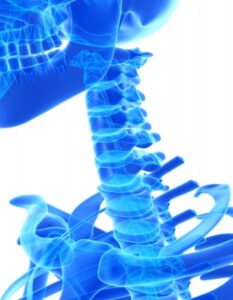Sciatica Chiropractor
What is sciatica?

Chiropractors have been emerging as primary sources for sciatica pain relief. Many people are turning to chiropractors over medications to help with sciatica pain. This is because many of sciatica’s symptoms can often be relieved by chiropractic adjustments. In this article, we will discuss sciatica and its sciatica treatment options.
In most cases, sciatica is thought to be caused by something constricting or compressing one of the lumbar in the lower back. This most often happens due to a herniated disc, but sciatica can also be caused by arthritis, osteophytes (abnormal bone growths), piriformis syndrome, pelvic tumors, and even pregnancy.
Sciatic pain usually begins in the lower back and shoots down one or both legs toward the feet. When sciatica occurs on only one side of the body, it’s usually because of an injury or strain affecting the low back on just that side. This is more common than sciatic pain on both sides of the body. This type of sciatic nerve damage is called sciatica. It’s usually temporary, but it can be permanent if it persists for more than a few weeks or comes back frequently.
Sciatica causes
Some sciatica causes are spinal disc herniation, spinal stenosis, degenerative changes of the spine, sciatic nerve entrapment, and others.
Spinal disc herniations often result in sciatica because the nerves that exit the lumbar spine between L4 and S3 can be impinged or pushed against by a bulging intervertebral disc. This condition is known as a “pinch” or “compression” sciatica. A pinched sciatic nerve can cause pain to start in your low back before it shoots down into your buttocks and legs.
Symptoms of sciatica include:
– Numbness, tingling, or weakness in one or both legs
– Pain that gets worse when sitting, standing, or walking
– Back pain at night (or with activity)
– Muscle spasm and loss of range of motion.
When sciatica is caused by something pressing on the sciatic nerve as it exits the lumbar spine, such as a herniated disc, this condition is known as “radiculopathy” sciatica. Radiculopathy sciatica can cause not only radiating leg pain but also back and buttock pain. Like non-radiculopathy sciatica, You can typically treat radiculopathy sciatica with medications, physical therapy, and exercise.
In some cases, sciatica may be caused by lumbar spinal stenosis. This is another condition that results from a narrowing of the part of your spine where the sciatic nerve exits your low back. In this case, sciatic pain may not just occur in your legs because both your leg and lower back pain can stem from having lumbar spinal stenosis.
Diagnosing sciatica

Effects of sciatica?
Sciatica is a complicated and painful condition that can have a substantial effect on your quality of life. There’s no way to sugarcoat it: sciatica hurts! The pain associated with sciatica can be so debilitating that many people living with sciatic nerve pain cannot work or complete daily tasks, which can cause stress in their relationships.
Fortunately, there are several sciatic nerve relief options available for sciatica sufferers. Sciatic nerve pain relief includes medications for sciatica, injections at the site of compression causing the sciatic pain, physical therapy, and chiropractic care. If these forms of treatment do not improve your symptoms after 6-8 weeks, You may need sciatica surgery to remove the sciatic nerve impingement.
Chiropractic care can provide treatment by helping to restore proper alignment in your hips and lower back, which reduces the pressure on your sciatic nerve roots. This form of sciatica relief also includes physical therapy exercises that address strength, flexibility, and posture.
Can a chiropractor help with sciatica?
What is the most effective pain relief for sciatica?
Sciatica Chiropractic Treatment Techniques
Chiropractic treatment techniques include spinal manipulation, which can also help to decrease sciatic nerve tension. This chiropractic technique helps promote the proper function of the sciatic nerve and surrounding muscle groups, resulting in pain relief for sciatica sufferers.
Another treatment option is drop-table adjustments, where slight changes are made within the spinal column that encourage nerves to return to their normal position. The use of a drop table allows your doctor to apply specific amounts of pressure while still maintaining safety throughout your treatment program at each visit.
therapies provided by a sciatica chiropractor include:
– Spinal Manipulation (SMT) – Drop Table Adjustments – Physical – Cold Laser Therapy – Acupuncture – Acupressure – Fitness and Lifestyle Counseling
There are many treatment options available to sciatica sufferers, but the best treatment option is one that suits you. Be advised that sciatic pain may not go away entirely for some time after sciatic nerve damage has occurred because a herniated disc or spinal stenosis typically cannot be corrected in a single chiropractic visit.
Be sure to schedule a consultation with your doctor of chiropractic if you have been suffering from sciatica or any other form of leg or back pain. Your doctor can determine what type of sciatica therapy will provide the most effective sciatica relief for your condition so you can begin moving toward your sciatica pain relief goals immediately.
FAQ?
Does a herniated disc cause sciatica?
Yes, sciatica is often the result of a herniated disk. This occurs when an intervertebral disc bulges out from between your sciatic nerve roots, which can cause sciatic nerve irritation and sciatic pain. You may experience sciatica symptoms such as back pain radiating into the buttocks along with numbness in your legs or feet.
Suppose you have leg weakness, trouble controlling urination, or bowel disturbances in addition to sciatica symptoms. In that case, these could also be warning signs that you are suffering from a herniated disk that is compressing your sciatic nerve. Sciatica relief includes spinal adjustments to reduce pressure on the
How to get rid of sciatica pain naturally?
Who can benefit from sciatica treatment provided by chiropractors?
What is sciatica treatment right for me?
As sciatica typically stems from something compressing or pinching the sciatic nerve, non-invasive treatments such as rest, medication, anti-inflammatory drugs (NSAIDs), epidural injections, and physical therapy can offer some relief. However, in most cases, sciatica is temporary and self-limiting (meaning it has an endpoint where the pain goes away on its own). In more severe cases where people don’t see improvement with these measures, they’re sometimes offered surgery.
Sciatica usually gets better on its own, but for some, it doesn’t, and they require treatment to relieve their pain. Surgery is also an option in some severe cases of sciatica. It may be an option if the sciatica is due to a tumor or cyst pressing on your sciatic nerve.
Non-surgical treatments are usually tried first before considering surgery. Many people find relief with physical therapy, exercise, chiropractic care, or acupuncture. If these aren’t effective, epidural injections can offer significant relief for some. The idea behind this injection is that injecting medication directly into the area where the pain originates — the spine — will help reduce inflammation and irritation. This relieves sciatica pain.
However, less invasive treatments may not be enough for some people who have sciatica from a herniated disc or another cause of sciatic nerve compression. In these cases, surgery may be an option after conservative measures fail to provide relief. Surgery usually involves removing the part of the disc pinching your sciatic nerve, and if needed, a spinal fusion can then restore stability to the affected area.
After surgery, you need at least six weeks of treatment with rest, physical therapy, and medication until you’re able to return to normal activities such as work and exercise. Sciatica exercises can also help speed up recovery as well as minimize your chance of future recurrence.
Get Help from A Sciatica Chiropractor for Sciatica Near Me
Conclusion
FIND A BACK PAIN SPECIALIST
Dr. J. (Valerie) Johnson
OFFICE HOURS
Monday
7:30am – 12:00pm
3:00pm – 6:00pm
Tuesday
9:00am – 1:00pm
3:00pm – 7:00pm
Wednesday
7:30am – 12:00pm
3:00pm – 6:00pm
Thursday
9:00am – 1:00pm
3:00pm – 6:00pm
Friday
9:00am – 12:00pm
1:00pm – 3:00pm
______________________
Sunday
by Appointment Only
RECENT POSTS





COVID – Targeting the cytokine storm with natural immune support


